6 DTC product content logistics challenges only a PIM can fix

Bhaskar Sarma
Writer
Logistics is not just central to war, but to the functioning of civilization; last month’s Suez Canal blockage is estimated to have cost the shipping industry an eye-watering $9.6bn every day as an anxious world- not just supply chain managers- fretted about delayed shipments and goods shortages.
In the context of DTC, both operators and consumers have a better understanding of just how important product lifecycle and supply chains are, following last year’s empty supermarket shelves and delayed deliveries during the 2020 holiday shopping period, aka Shippageddon.

However, a similar consensus is lacking in the context of the product content lifecycle where raw data goes through multiple stages and stakeholders before it transforms into persuasive, expansive, and accurate product pages.

Product pages are the most important page driving customer buying decisions (and influencing brand perception) on a DTC website: another Nielsen study found that 20% of users abandoned a purchase because of incomplete or unclear product information.
But plenty of high inventory DTC brands are still using obsolete tools like spreadsheets to manage the product content lifecycle resulting in delays, busy work, accuracy and collaboration issues, etc.
These issues are exacerbated when brands need to push out 100s of SKUs daily, resulting in product teams unable to complete even the must-have UX components of a product page.
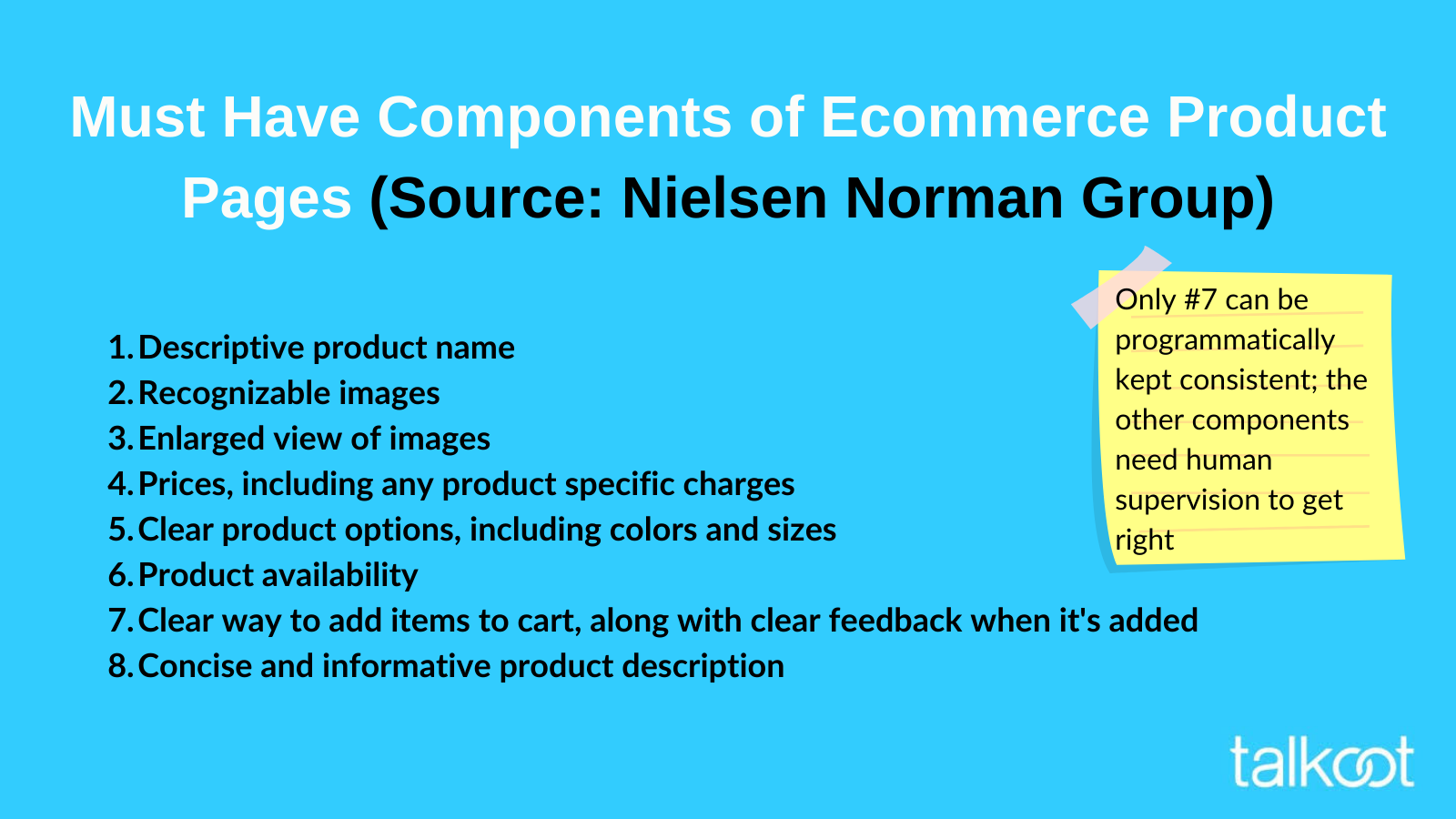
If you really want to grow your revenues and profits without massive capital infusion, one of the highest leverage jobs you can do is streamline your product content lifecycle, as many of the fastest-growing DTC brands have done.
Using modern tools and smart workflows, they are consistently pushing 100s of new SKUs online daily while keeping overheads low and their brand story consistent.
These brands are also keeping their content fresh, and getting real, dollar benefits just from organic SEO (data aggregated from SEMrush).
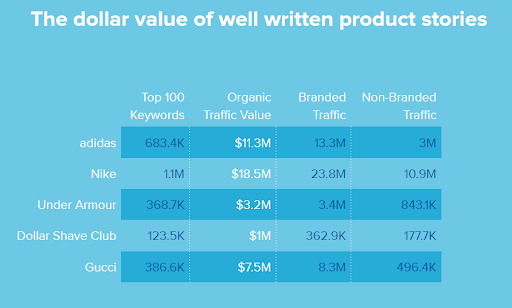
In this post, I am going to show how custom-designed product information management systems like Talkoot can help you keep up with consumer demands and make the process of publishing and updating product content no more complicated than managing your social media pages.
The chaotic impact of high DTC growth on product pages
When you are a small brand with 100 to 500 SKUs, you are more focused on winning individual wars. At that stage, you will be more focused on:
- Achieving product-market fit.
- Understanding your customer’s requirements.
- Crafting a credible brand story.
- Ironing out kinks in the product supply chain.
- Building out and optimizing different traffic sources.
18 months and $2-5M ARR later, you are now confident of your product and your market and want to expand and grow, with a bigger team, more SKUs and product categories, and a larger geographical footprint.
Almost immediately, you are going to run into a variety of issues.
1. Low engagement, low efficiency
With a ballooning inventory, you risk losing the intimate vibe of a small business in the context of product copy and experience, but don’t yet have the efficiencies and economies of scale of behemoth retailers.
Your product pages start to fail the two most important criteria as defined by Nielsen Norman and start to display misleading or incomplete information or both.
You start to lose out on community, content, and curation associated with smaller brands like Glossier or Allbirds but lack the price, convenience, and selection of an Amazon or a Target.
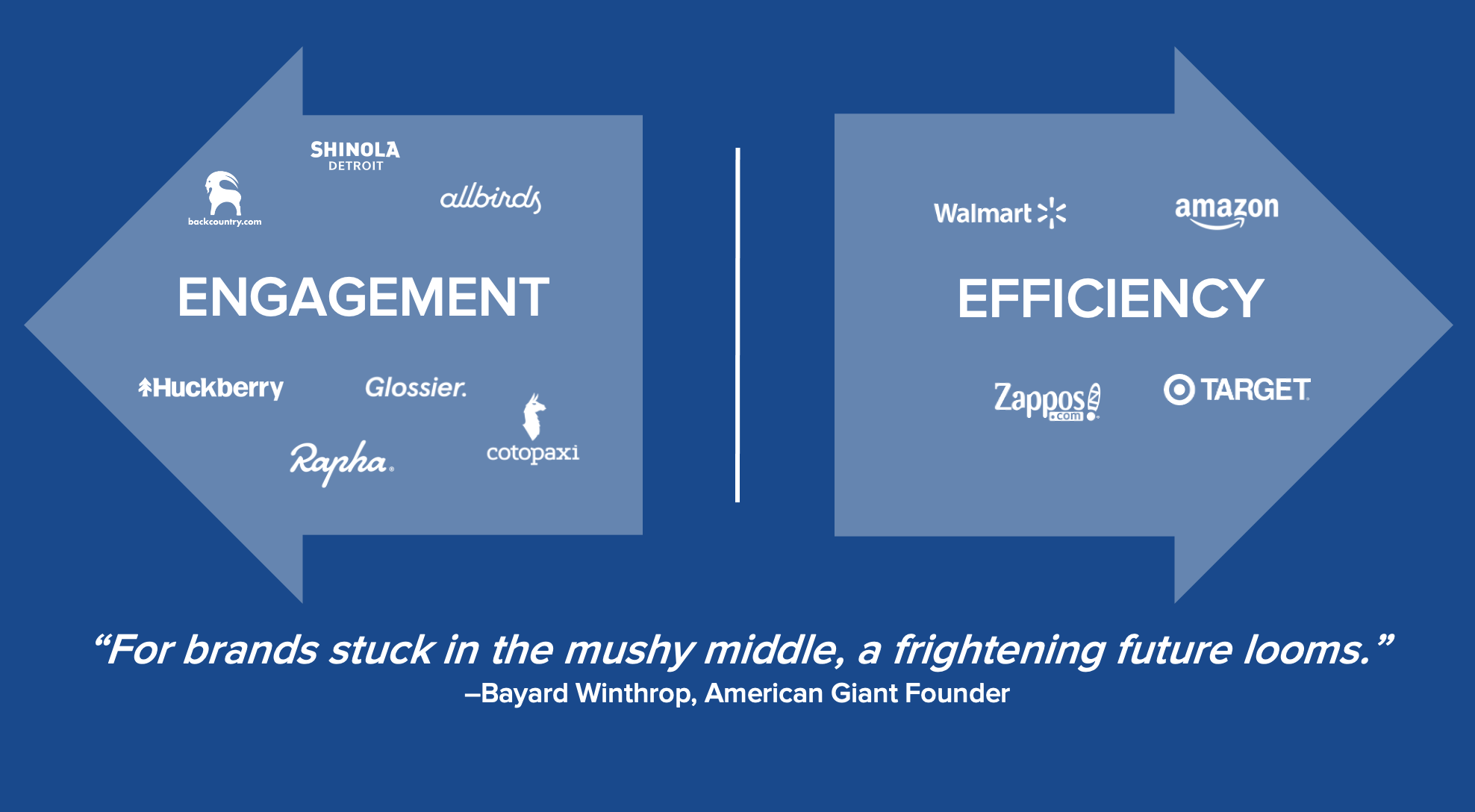
You risk falling in the dangerous ‘mushy middle’ where many eCommerce brands, like Tom’s, have sunk without a trace.
2. A brand with a split personality
When you don’t have consistent editorial controls (or an easy way to enforce them), product descriptions written by different people accessing different background information and at different times can sound completely different to the user, triggering confusion and low conversion rates.
For instance, let’s assume that your brand uses GORE–TEX®, a proprietary fabric to create waterproof and breathable shoes, jackets, and raincoats across 100s of SKUs.
Depending on the product you would want to describe the benefits of Gore-Tex differently.
(See what I did there, by incorrectly using mixed caps instead of the correct all caps text to refer to the technology? This human error is expected, but impossible to squelch when you have an inventory with 1000s of products).
Without adequate controls, your team might copy-paste the same blurb about GORE–TEX® across different product lines, saving time but confusing users who will exit the site.
But because GORE–TEX® implements consistent editorial controls, it can differentiate between a woman’s running/gym shorts (left) and cycling shorts (right) based on usage patterns.
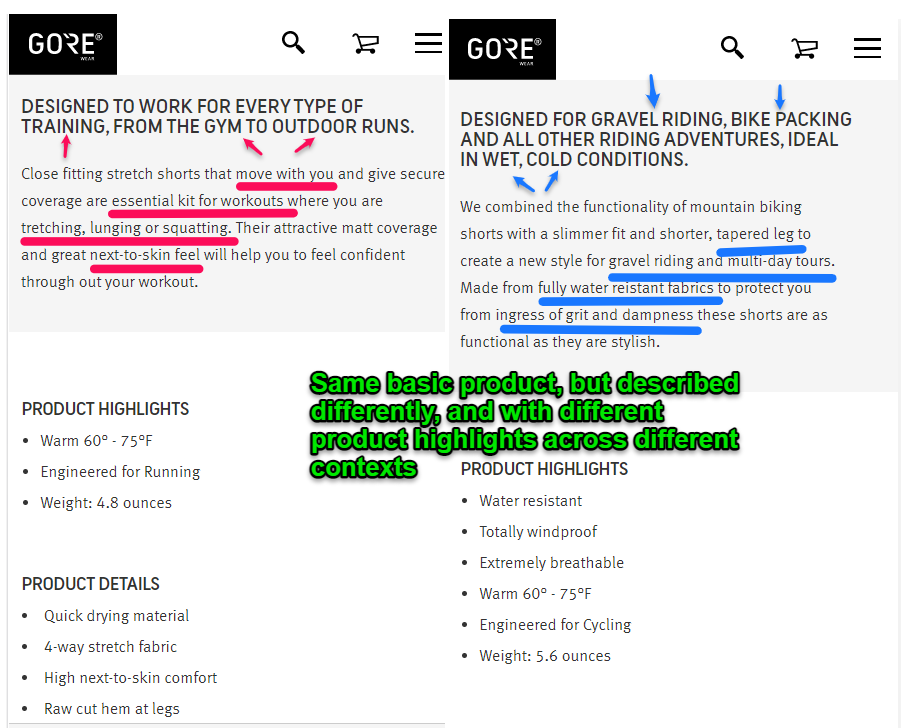
This description does a great job of making customers feel heard and will likely have higher conversion rates than a page with a generic description.
3. Obsolete, out of context product copy
As your inventory grows, you will have 1000s of products that are available throughout the year.
But a customer searching for a hoodie, or a jacket to use during the fall will bounce out if the description talks about how the product shields the skin from the harsh summer sun (even though the fabric is amazing for fall as well).
Along with variations in weather, you would also want to refresh your copy according to different events and promotions (and geographies, if your brand is international).
You should also be able to update product content quickly and easily to take advantage of the zeitgeist.
For instance, when sweatpants were trending during the lockdown (see this Mar 2020 story), would you not have gotten an SEO and conversion boost if you could instantly change track pants, joggers, or training pants in your product titles and descriptions into sweatpants?

Obsolete content doesn’t just hurt your conversion rates, but can also impact the SEO of your product pages since content freshness is one of Google’s major ranking factors.
4. Silos between marketing and product
High growth DTC brands spend at least 50% of their marketing budget on social media.
This translates into hundreds of ads, with multiple variations of copy and creative leading to product pages that might not reflect the same headline/ details, leading to your ads being tagged as misleading.
Explosive growth often comes with technical and editorial debt where updating and revamping product pages is no longer as fast and easy as updating social media pages or editing a blog post.
So even if your Facebook ads might have higher quality and engagement rate rankings because the copy and creative are excellent, they may suffer from lower conversion rate ranking, affecting overall ad performance.
Similarly, a low landing page experience can drastically affect the Quality Score of your Google ads and increase costs.
And it’s not just performance metrics- low relevance ads caused by the inability of marketing and product teams to work together will invariably trigger low conversion rates on your product pages and higher bounce rates, leading to loss of revenue and higher CAC.
5. Inability to tailor product copy to customer feedback and sales data
Apart from marketing and product, there’s also a massive gulf between sales/support and product teams of many fast-growing brands.
For instance, you might refer to a product as an exercise dress, but in multiple Instagram videos or Tweets, customers are calling it an internal bodysuit.
Or consider products with high return rates. One study found that 30% of customers purchase multiple sizes of the same product and keep only the one with the best fit, and 64.2% of returns were triggered by inaccurate descriptions.
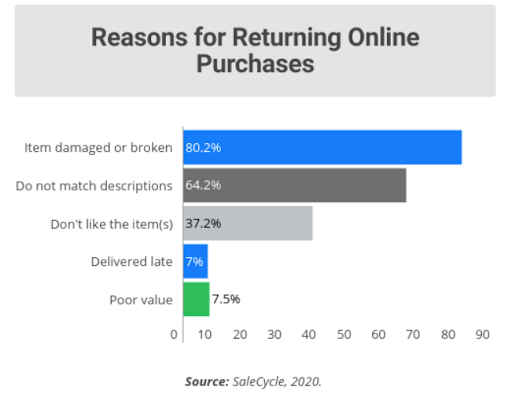
Ideally, the product department should get these insights from sales, support, and marketing, tweak the product page to edit confusing information, and reduce return rates and align the content with customer feedback.
But for high growth brands, this information is scattered across different systems and it becomes near impossible for product teams to actually update and change the description in near real-time.
The result: poor customer experience, loss of revenue, and increased cost of returns.
6. Inflated product cost because of inefficient workflows
High growth brands will typically work with freelancers and third-party contractors to create product copy.
But most of them work without any efficient workflow or even templates.
From researching to collecting raw data to getting the copy fact-checked, optimized for SEO, and approved, there are 6-7 stakeholders involved in the entire product copy process.
When teams stick to cumbersome tools like email or Slack for communication and spreadsheets and file folders for creating and storing data they set themselves up for frustration, wastage of time, and inefficiency.
These time overruns can inflate the product’s COGS and might result in lower margins or higher prices, both affecting profitability.
How product information management systems help fast-growing brands stay ahead of the pack
Some of the fastest-growing DTC brands are using specialized PIM software to keep up with their expanding inventory and maintain a consistent brand story through multiple channels.
At Talkoot, working with brands like Burton, a DTC brand ranked #12 fastest growing according to Charm.io, Adidas, and Danner, an iconic American footwear brand has given us insights into how brands might balance engagement with efficiency.
Here are some pointers for your consideration:
1. Streamline your product team and set it up for cross-departmental collaboration
The first thing these brands do is set up a product team and finetune the product content workflow into assembly-line perfection.
For many of these brands, their content team’s org chart looks like this.
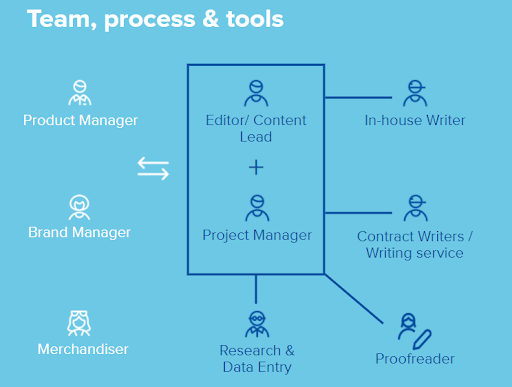
Depending on your size, you might have anywhere from 4-40 people in this team, but as long as everyone knows their roles the train will chug along smoothly.
This team will have people from multiple departments like sales, product and marketing and can collaborate on the same tool like Talkoot, guaranteeing seamless exchange of communication, regardless of the size of the team.
For a variety of reasons like absence of collaboration features, lack of access and version control, robust sorting and search tools these teams no longer use Excel.
2. Practice and implement product content workflows
High growth DTC product teams live and die by easily understood and replicable workflows and processes practiced over and over again until they are embedded in the team’s collective muscle memory.
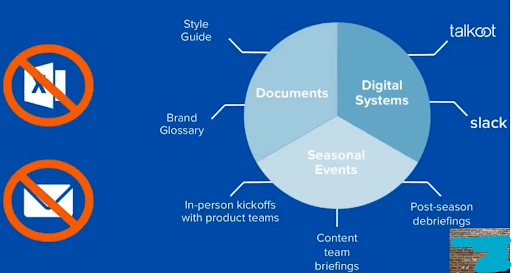
These workflows incorporate documents like style guide and brand glossary that needs to be easily accessible by everyone where the actual work is done, instead of gathering digital dust in a Dropbox folder somewhere.
These brands also plan out activities at regular intervals so that everyone on the team is aware of copy requirements well in advance.
A PIM like Talkoot helps project managers and team leads get visibility into each part of the workflow so that no one gets a nasty surprise the night before a major launch.
Properly implemented, these workflows can also help your writing team predict how much time it will take to complete that day’s work, allowing them to plan and predict their output.

3. Templatize, reuse, and recycle
If you check out Burton’s product pages, you will notice that the descriptions all follow the same pattern, right down to the SEO headline.
The text enclosed within pink varies from product to product in the same category, while the green boxed text that has technical details stays the same.
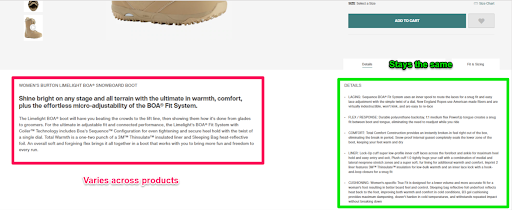
With a tool like Talkoot, product teams can go beyond reusing text snippets across product pages and save time- they can easily pull out last year’s Halloween or Father’s Day specific copy, make minor tweaks and update 1000s, or 10s of 1000s of product pages with a few clicks.
Back to content patterns: even for the text enclosed within the pink box, the text follows a certain format across different products.
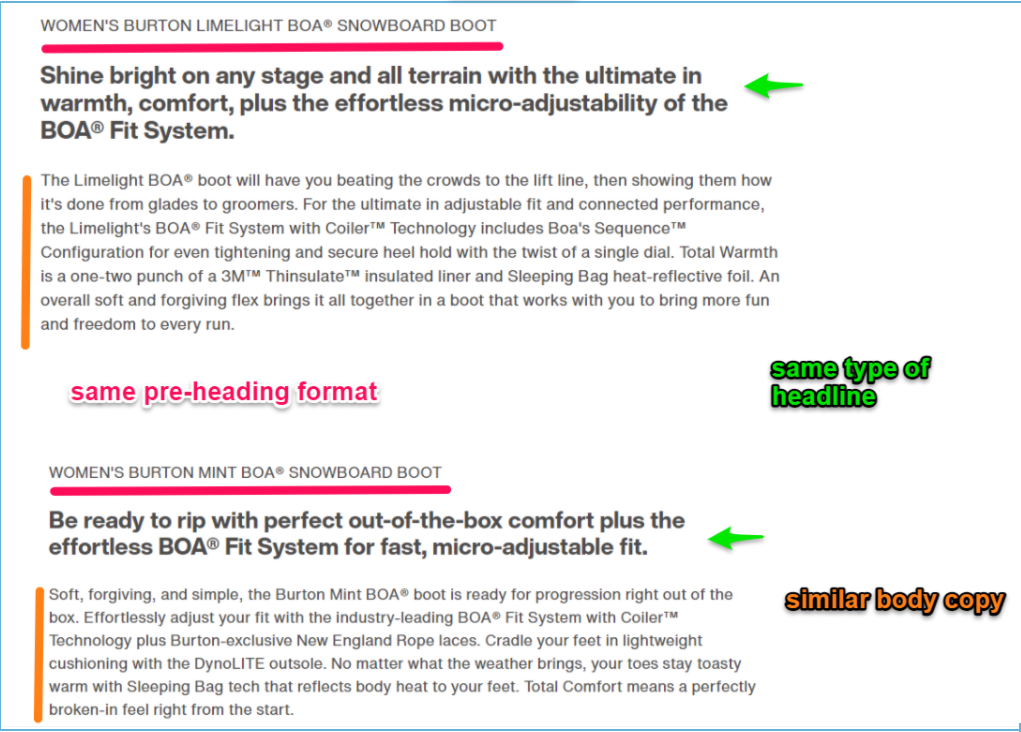
This is the magic of templates, where teams can balance consistency with scale without slaving over each product description.
In Talkoot, you can prepare a template like this, and with a few clicks add it to each product description.
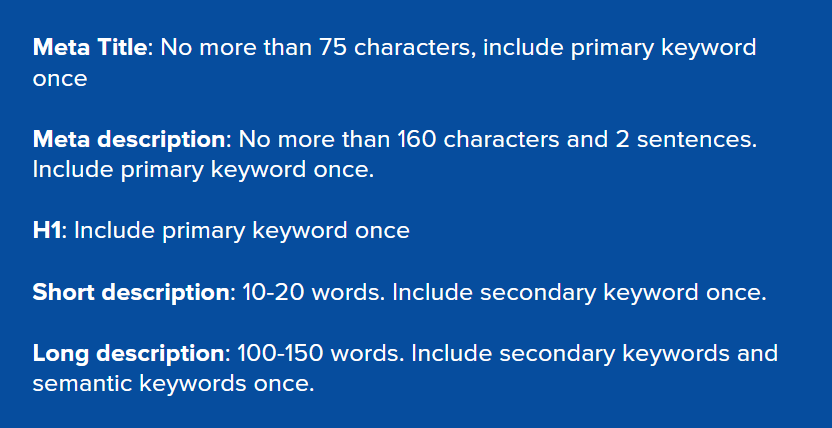
Fill in the blanks, send it for approval, publish, and voila- you have just completed a week’s worth of work in 30 minutes or so.
4. Get free traffic from Google
93% of all online activity starts with search and 30% of all traffic to an eCommerce site goes straight to the product page.
Great DTC brands know the value of well-crafted product copy because these pages do the heavy lifting when it comes to product education, branding, and conversion.
All standout brands follow SEO best practices like:
- Keeping content fresh
- Matching content with search intent
- Optimizing keywords
- Writing content that provides complete information
- Understanding the competitive landscape
- Adjusting for readability on mobile
Because of Talkoot’s collaborative features, customized workflows and easy-to-use templates, writers will already have access to the appropriate keywords and can create optimized content right off the bat and get it tweaked and approved without excruciating back and forth over email or Slack.
What’s more, writers can also create content for category pages for website visitors who are at an earlier stage of the buyer’s journey and their intent.
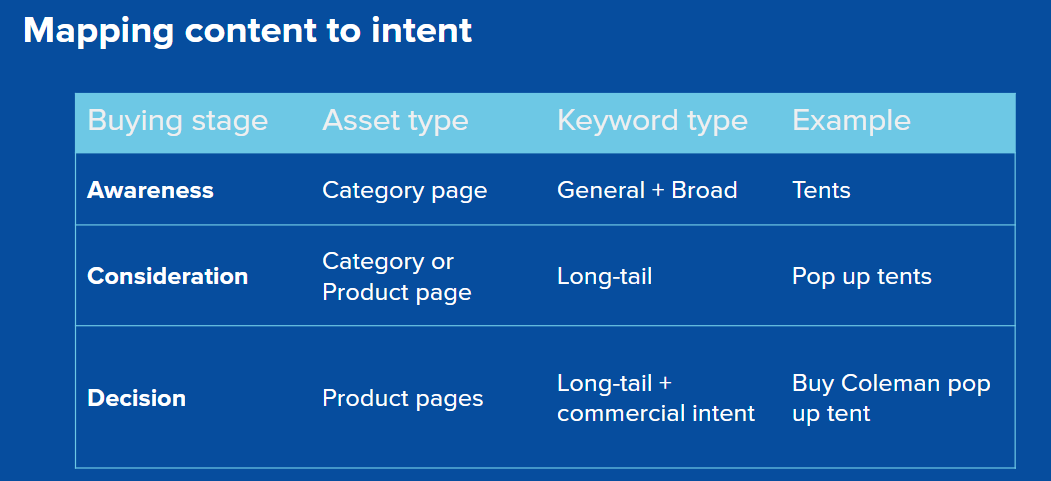
With a PIM like Talkoot, this content gets published easily on the store without writers needing to bother developers.
End result: more high-quality content gets published efficiently, the site gets more traffic and conversion rates get higher.
5. Customize copy for multiple retailers
One of our clients, Dr. Martens had a problem writing copy for multiple channels like Amazon and third-party retailers, each of whom had their specific requirements.
From the case study:
Amazon needs a copy description and 3-5 bullets minimum with a 250-character count max.
A “z-welt stitch” is always written with lowercase z, unless at the beginning of a sentence.
Keeping track of and implementing these types of rules was beyond painful for Dr. Martens, especially when rules changed after the product copy was finalized….
…Writing copy for multiple channels in Excel sheets made it challenging for Dr. Martens to keep the copy consistent and accurate across those channels.
There was no easy way to cross-reference product data or view how a product was described in past seasons or channels.
Thanks to Talkoot’s open APIs and robust integration with platforms like Amazon, Shopify and Salesforce, you can easily publish your Amazon-specific product description, or connect it with a traditional PIM to publish content across myriad channels.
Conclusion
Information confirms, but stories convert.
In a previous post, I had highlighted how two retailers sold the same type of axe at wildly different price points just on the basis of a well-written product story.
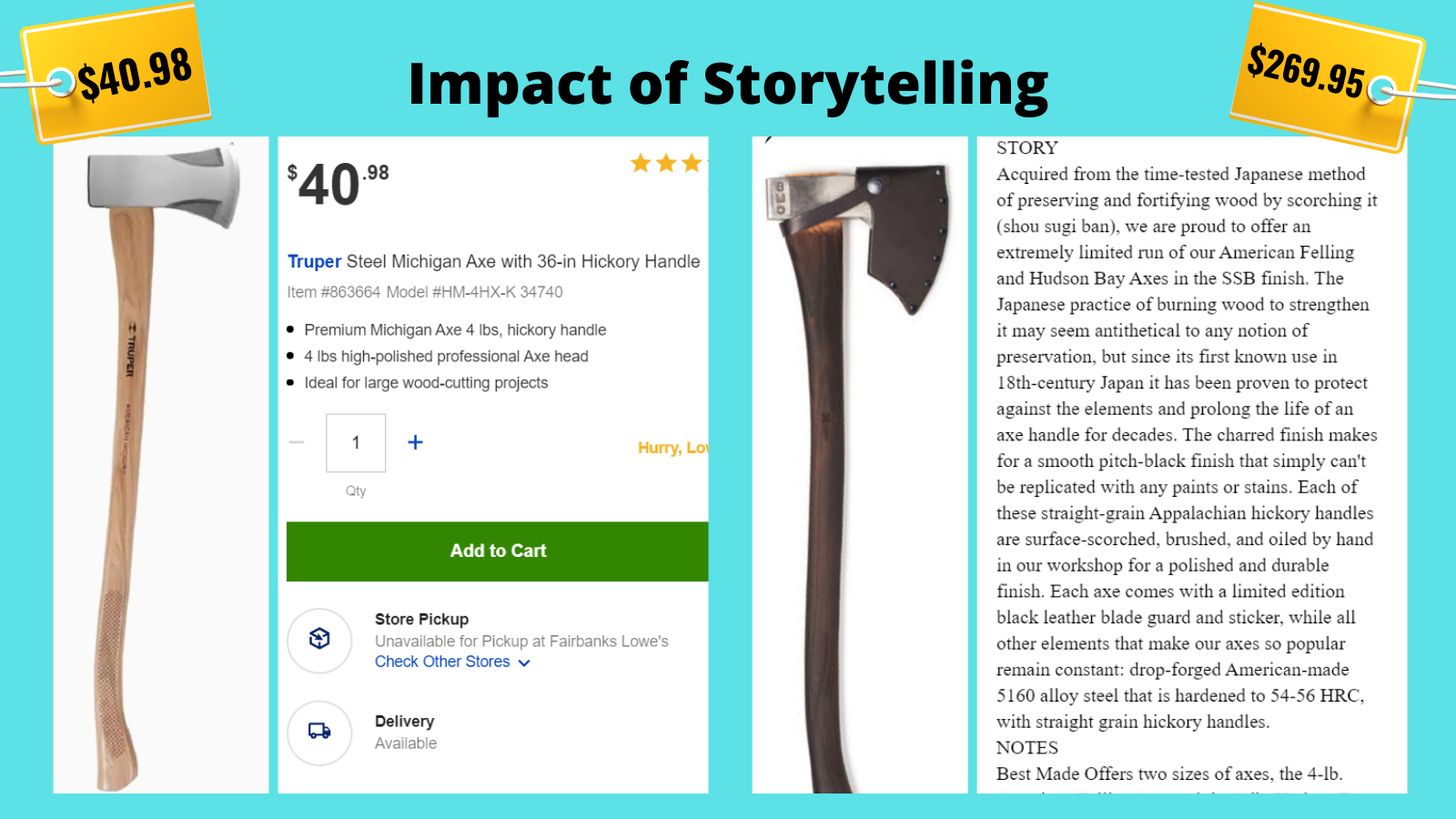
But great DTC brands like Glossier (also a unicorn) are also using storytelling and the power of narrative to drive conversions for a low-cost product like a tube of cream.
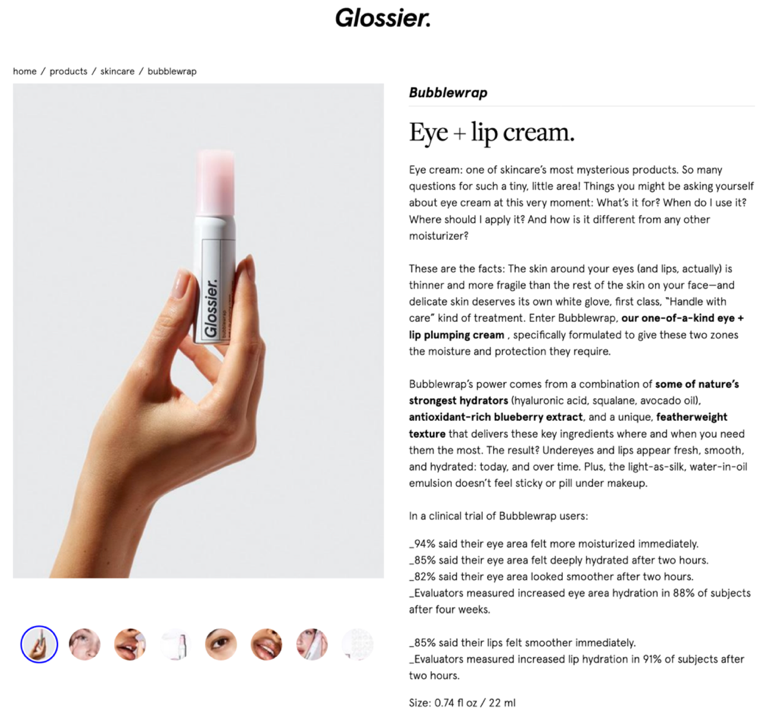
This product description focuses more on answering the Why (Why should the customer care) and less on the What (What is it) and How (How does it do that).
This customer-centric copy drives more conversions compared to product-centric copy.
With a PIM like Talkoot, brands can replicate this structure across their entire lineup thanks to premade templates, and take the same time to update product copy regardless of the size of their inventory.
When the product copy becomes a conversation between customers and the brand, the conversion rate increased by 14% for our clients while returns fell by 3x as errors were systematically eliminated.
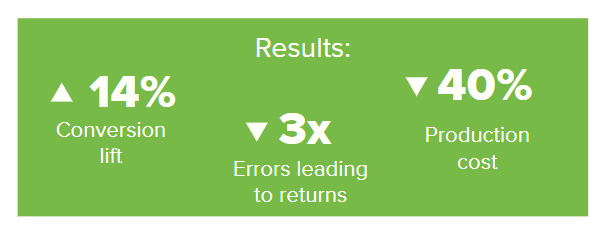
The north star of the direct-to-consumer experience is to duplicate online the care, knowledge, and attention of a local specialty retailer.
By adapting product stories to be more in tune with the customer’s current wants and needs using a PIM like Talkoot, many high-growth DTC brands have turned their product page into a much more responsive and effective sales tool, even at scale.
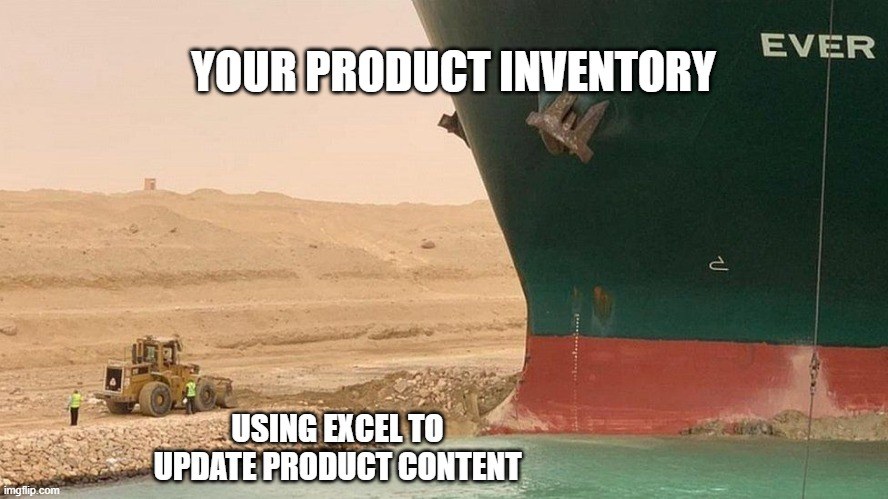
“Infantry wins battles, logistics wins wars”
– Gen John Pershing, US Army, WW2.
